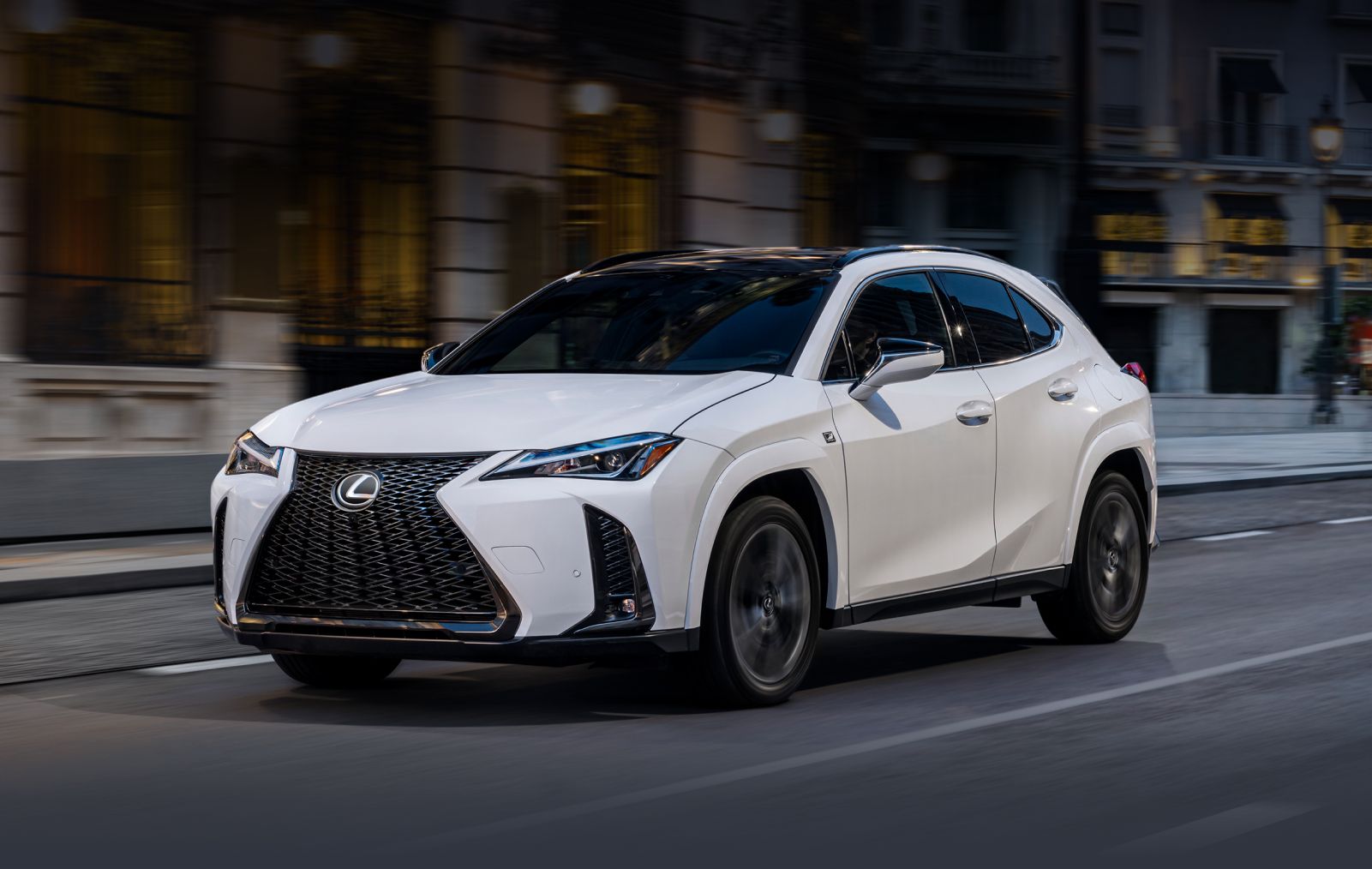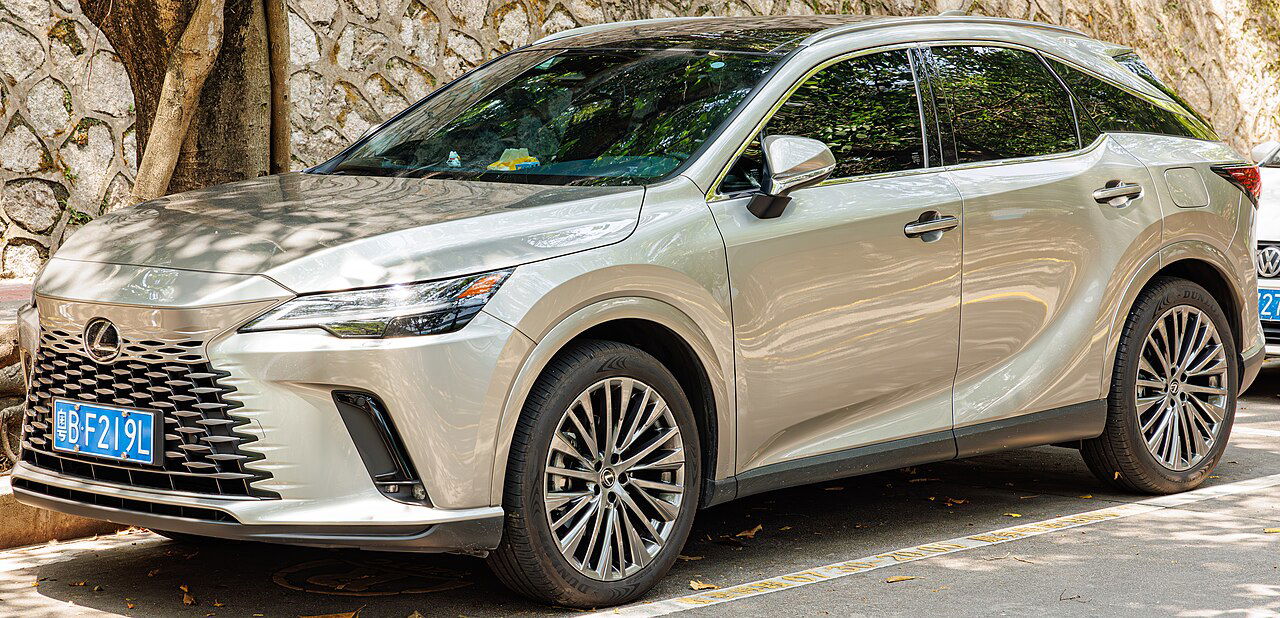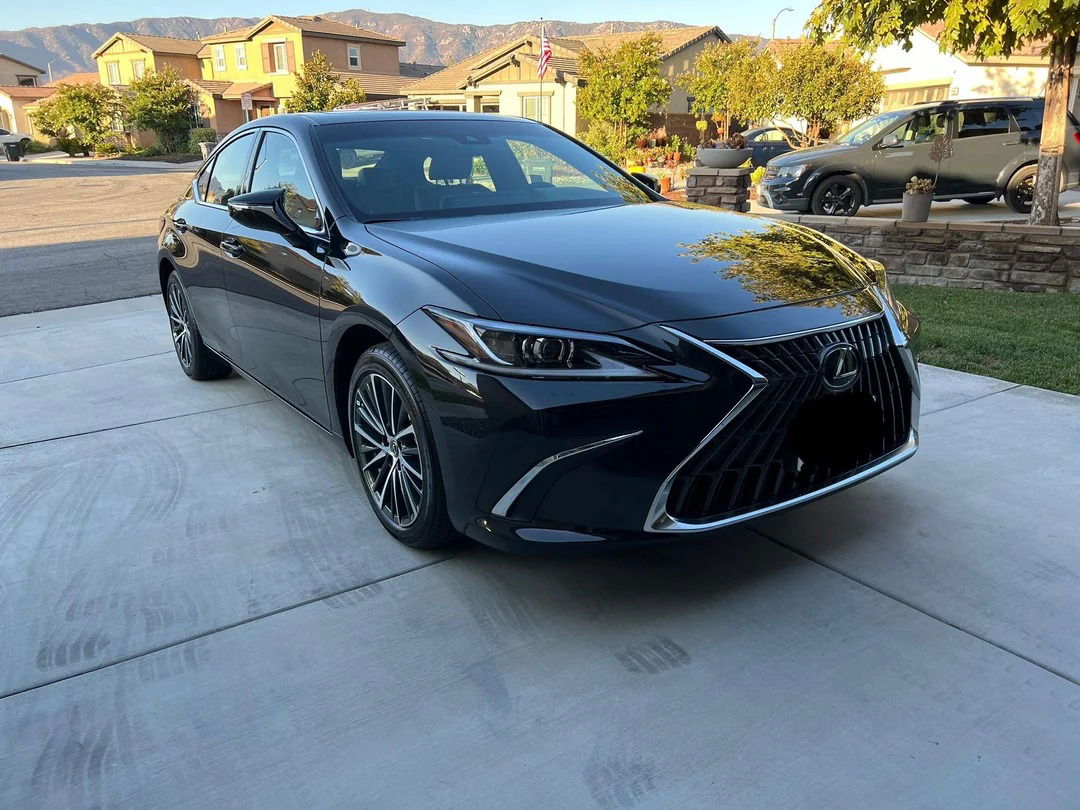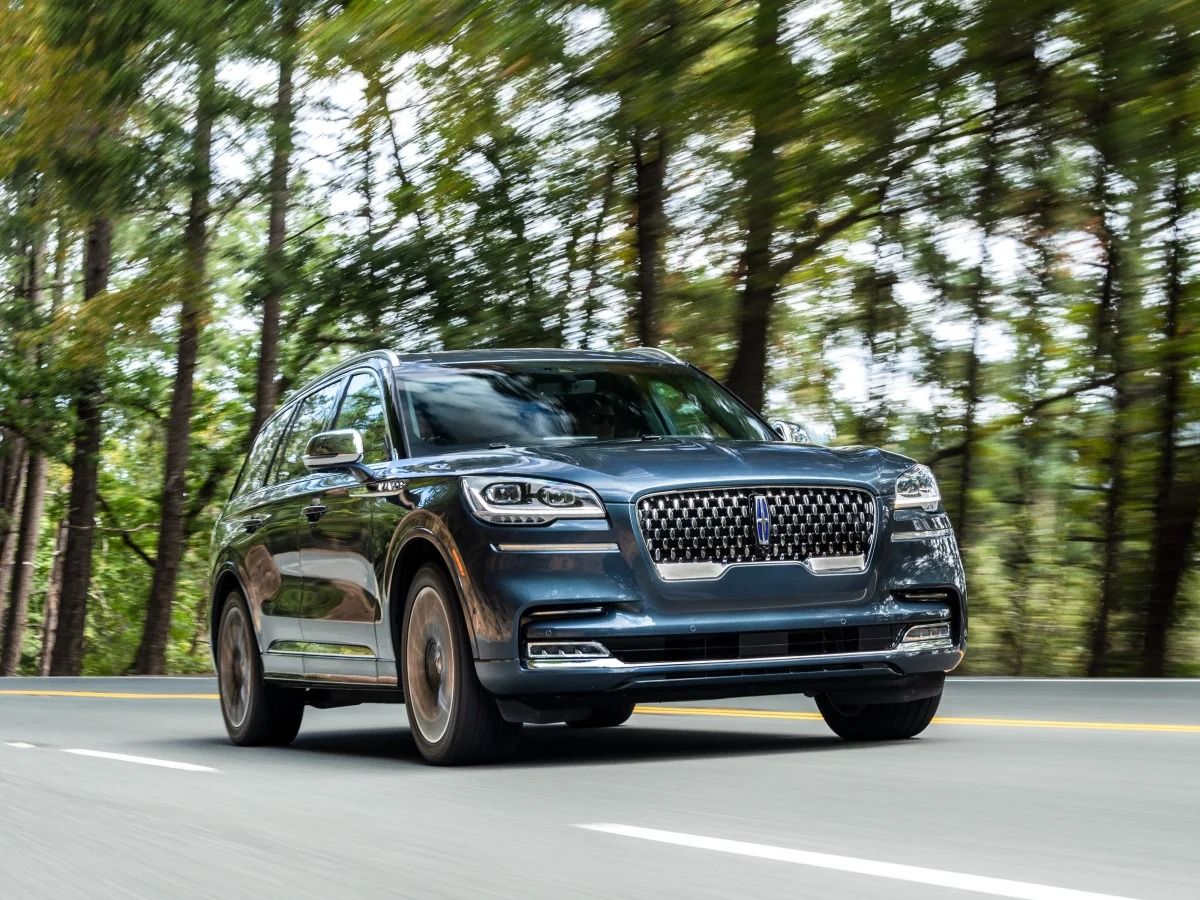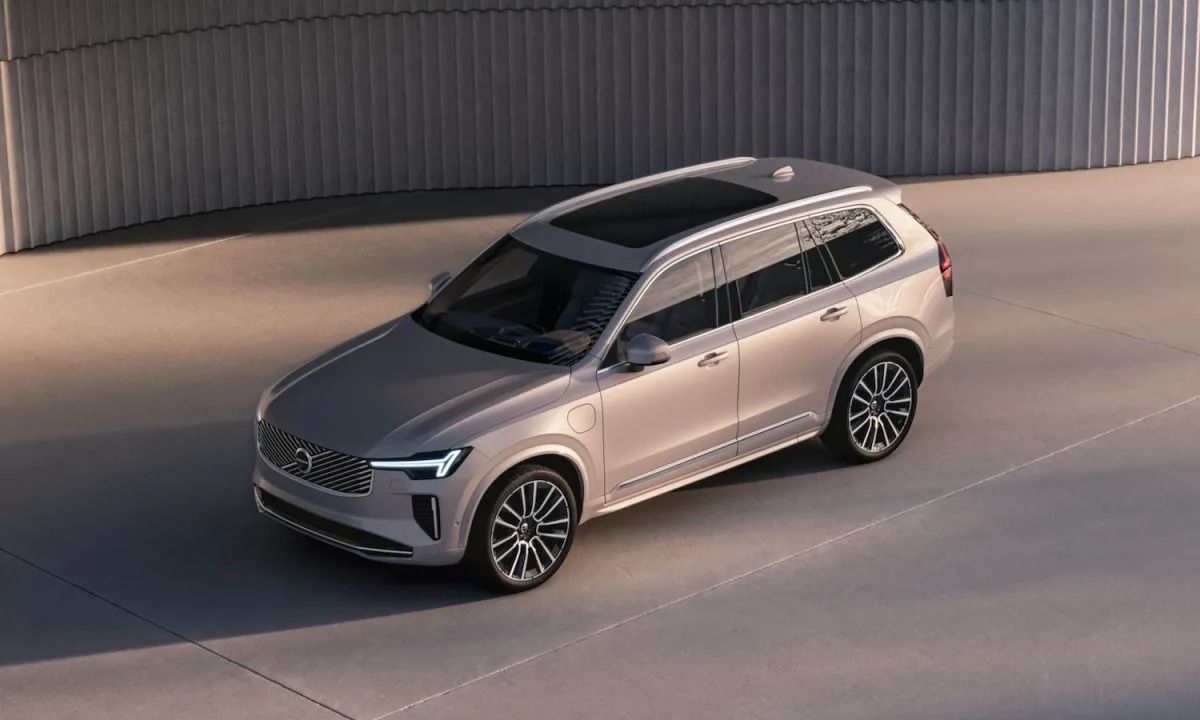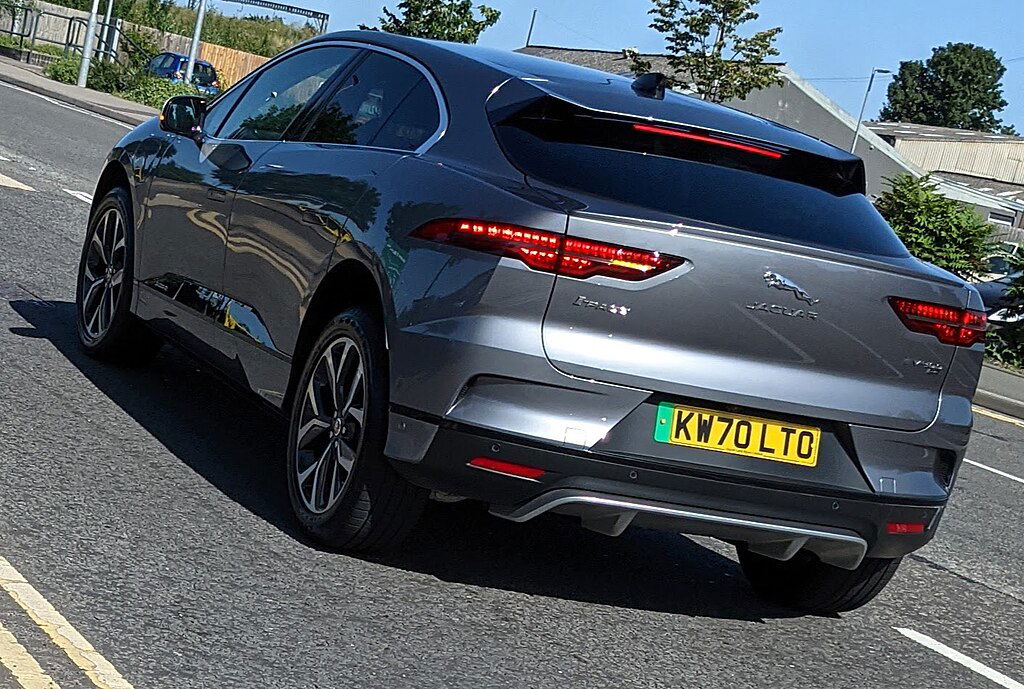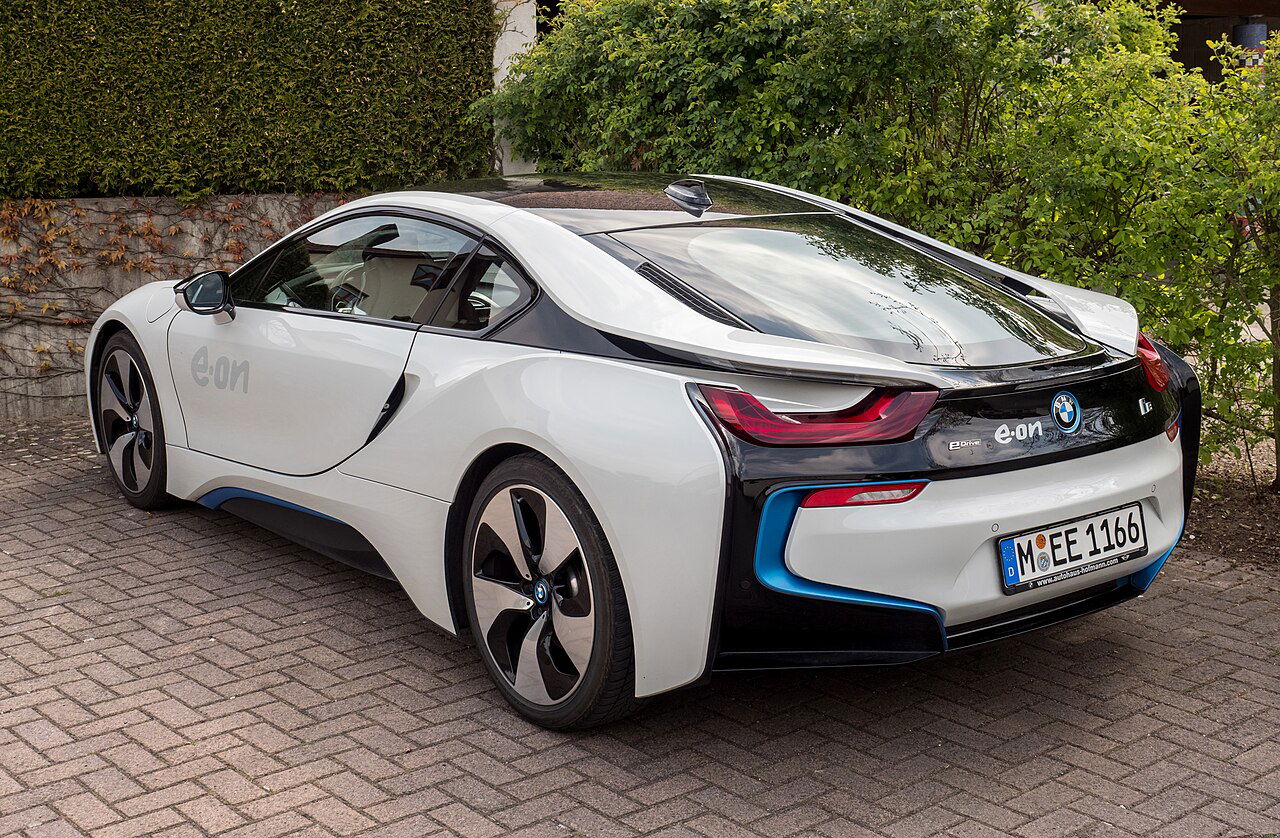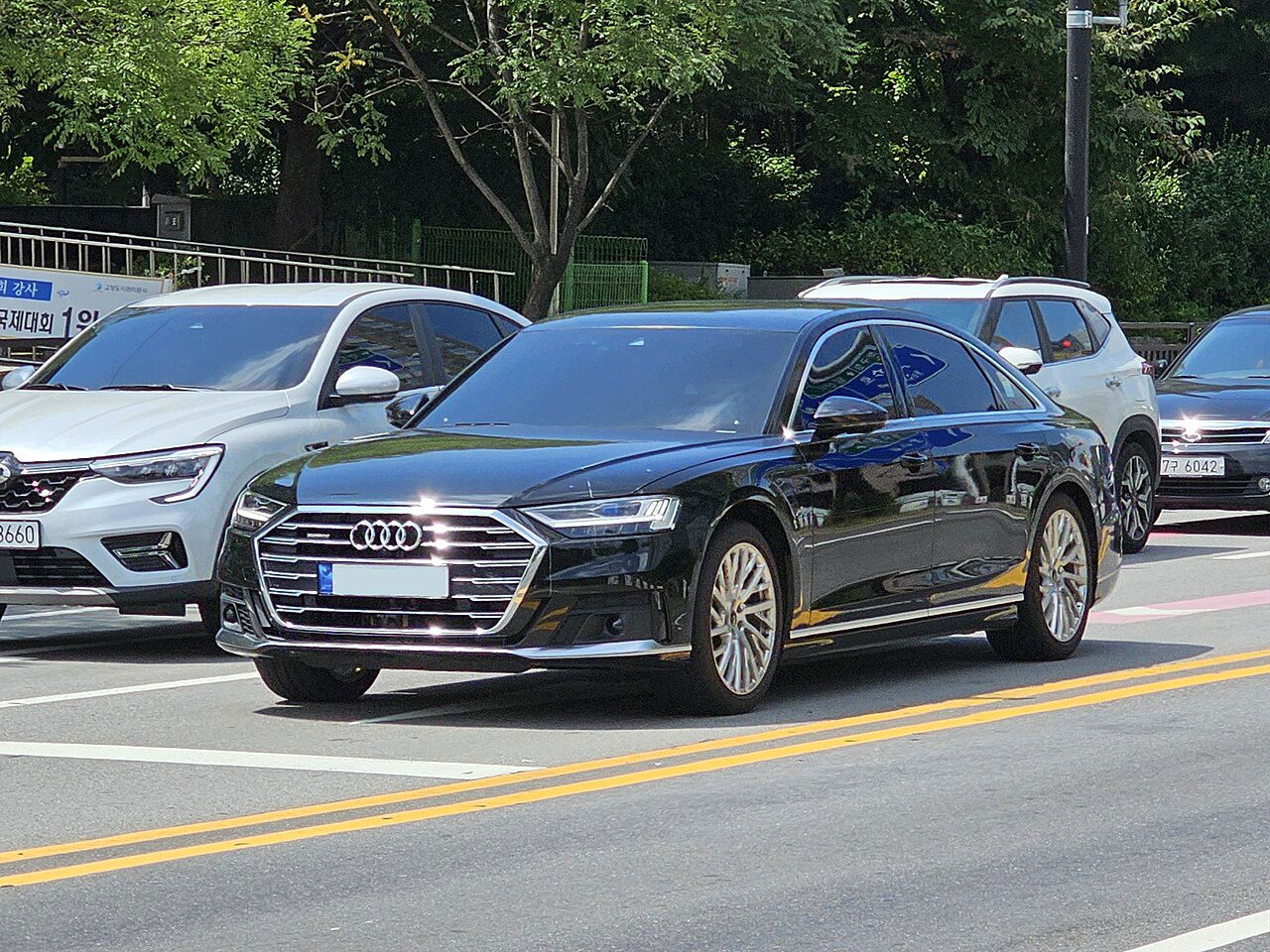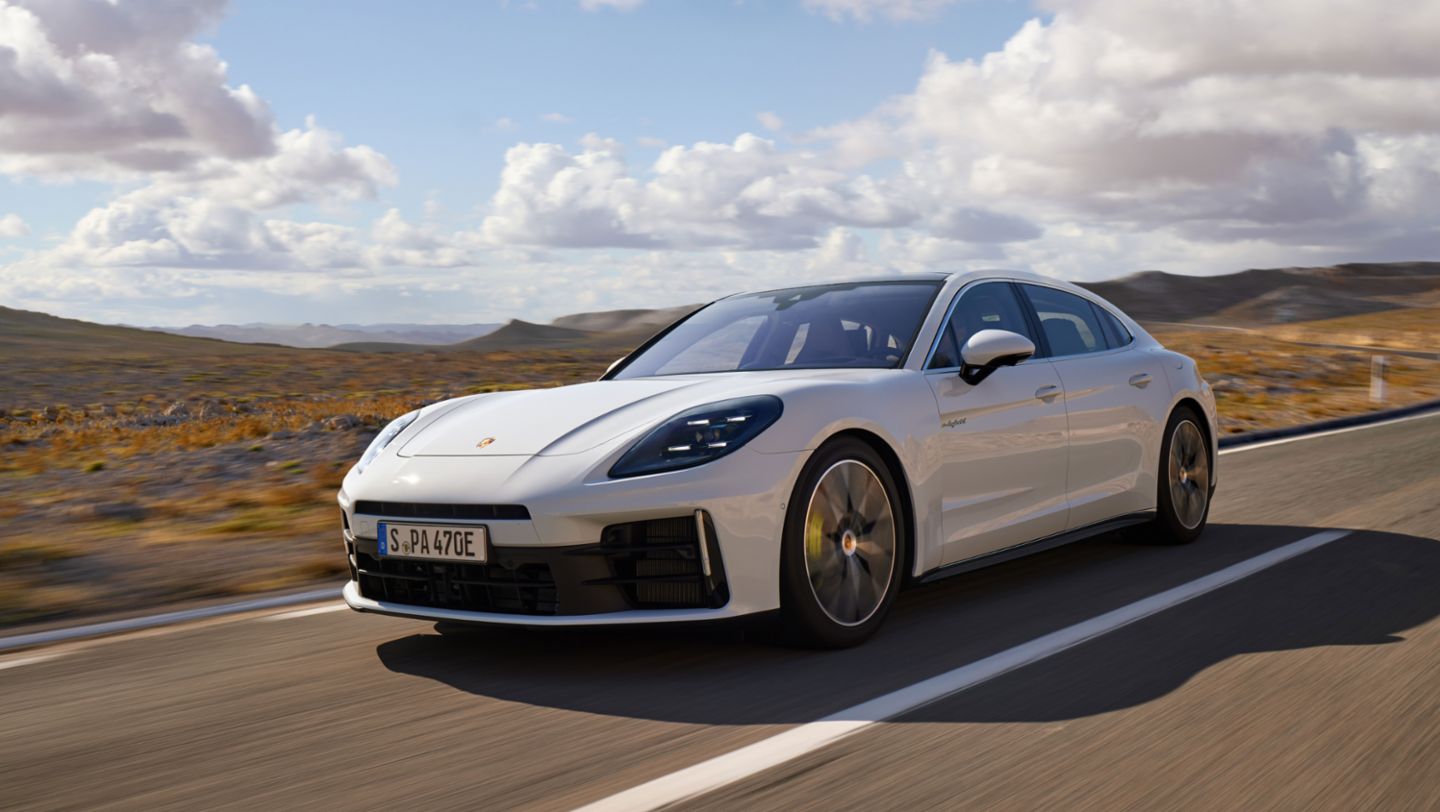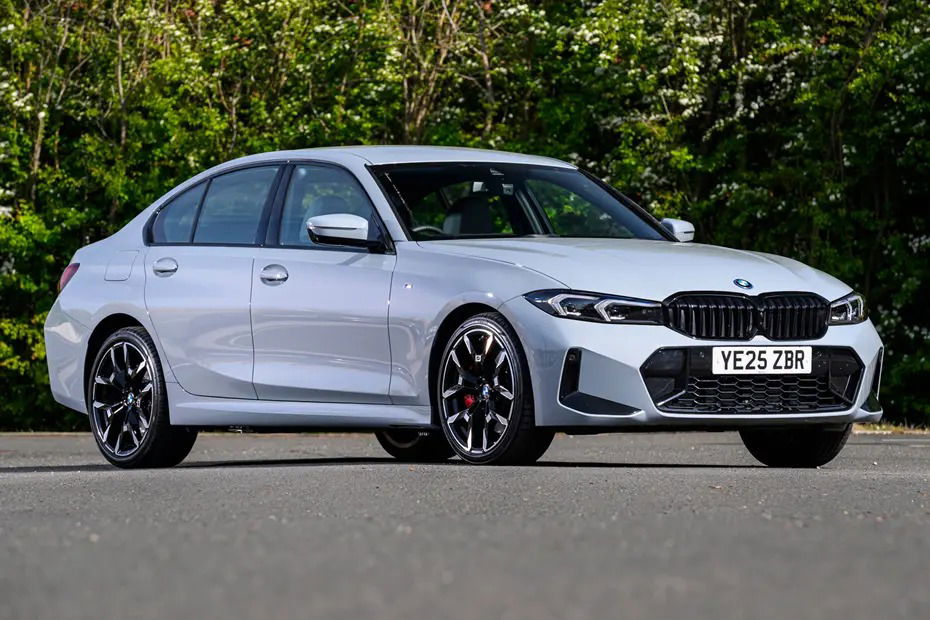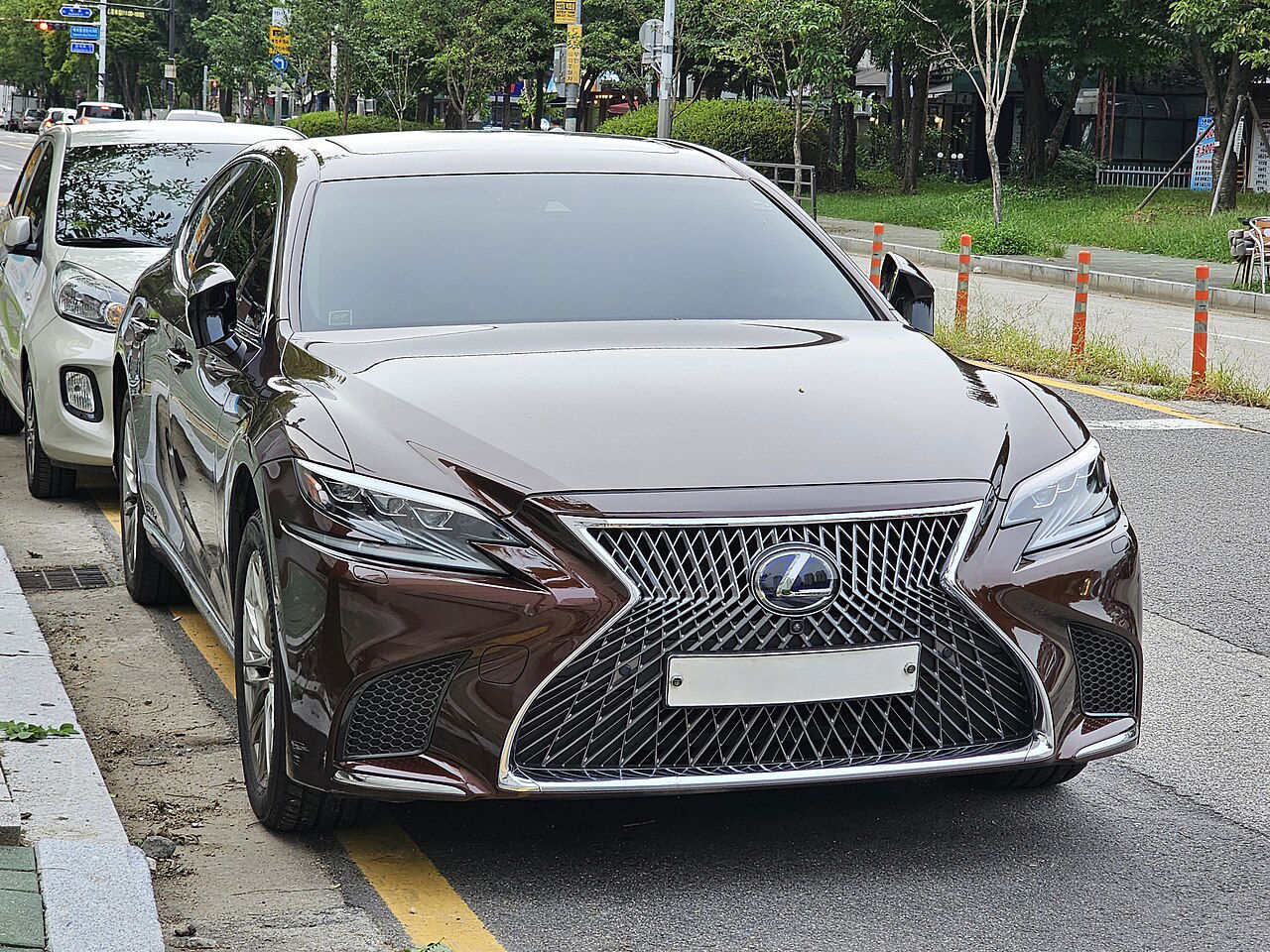15 Luxury Cars That Deliver Surprisingly Impressive Fuel Economy
Fuel economy usually isn’t the first thing that comes to mind when people think of luxury cars. But in today’s world of hybrid technology, plug-in hybrids, and efficient electric vehicles (EVs), some of the most opulent cars on the market also happen to be remarkably efficient.
If shopping for the best luxury fuel economy cars or just curious about what luxury cars have the best gas mileage, this list has you covered.
Luxury Hybrids, PHEVs, And Efficient ICE Models
If you're looking for fuel efficient luxury cars without going fully electric, these hybrids and plug-in hybrids deliver excellent efficiency—many rivaling non-luxury compacts!
1. Lexus UX 300h (2025) – Subcompact Luxury Hybrid
EPA Ratings: Front-Wheel Drive (FWD): City: 45 MPG, Highway: 41 MPG, Combined: 43 MPG / All-Wheel Drive (AWD): City: 44 MPG, Highway: 40 MPG, Combined: 42 MPG
- Fuel Type: Regular gasoline
- Tank Size: 10.6 gallons
- Estimated Range: ~456 miles per tank
Real-World Mileage
According to owner data from Fuelly:
- Average MPG: ~39.7 MPG across 38,000+ miles
- Best Reported MPG: Up to 45 MPG by individual users
- Tested MPG: Autoweb averaged 47 MPG during a weeklong test drive
Why It’s Surprisingly Efficient
The UX 300h is among the best gas mileage luxury cars and also happens to be Lexus' most affordable SUV. It's ideal for those seeking high gas mileage luxury cars in a city-friendly package.
It combines a 2.0-liter inline-4 engine with more powerful electric motors for a total of 196 horsepower, up from 181 hp in the previous UX 250h. Along with regenerative braking, the EV Mode allows short bursts of electric-only driving in low-speed conditions.
2. Lexus RX 350h (2025) – Compact Luxury SUV Hybrid
- EPA Rating: City: 37 MPG, Highway: 34 MPG, Combined: 36 MPG
- Fuel Type: Premium gasoline
- Tank Size: 17.2 gallons
- Total Range: ~619 miles per tank
Real-World Mileage:
- Owners tracking their fuel usage on platforms like Fuelly report:
- Average MPG: ~33.3 MPG across 478,000+ miles
- Range: Between 33–38 MPG depending on driving habits and conditions
This slight drop from EPA estimates is typical, but still excellent for a midsize luxury SUV.
Why It’s Surprisingly Efficient
Several engineering choices contribute to the RX 350h’s standout efficiency. A 2.5-liter naturally aspirated 4-cylinder engine paired with electric motors optimizes fuel use during city driving and low-speed cruising.
Regenerative braking captures energy during deceleration to recharge the battery, reducing reliance on the gas engine.
Lexus uses advanced materials to keep curb weight down, improving fuel economy without sacrificing refinement. Sleek bodywork and active grille shutters reduce drag at highway speeds, while its stop-start Technology automatically shuts off the engine at idle to conserve fuel.
3. Lexus ES 300h (2025) – Mid-Size Luxury Sedan Hybrid
- EPA Ratings: City: 43 MPG, Highway: 44 MPG, Combined: 44 MPG
- Fuel Type: Regular gasoline
- Tank Size: 13.2 gallons
- Total Range: ~581 miles per tank
Real-World Mileage
- Drivers on platforms like Fuelly and Reddit report:
- Average MPG: ~46 MPG during highway-heavy driving
- Driving Mix: 75% highway, 25% city
- Observed Range: 45–48 MPG depending on climate and driving style
Why It’s Surprisingly Efficient
If you're asking what luxury cars have the best gas mileage in a sedan, the ES 300h ranks high. It’s consistently regarded as one of the best fuel-efficient luxury cars on the market. Several smart engineering choices make the ES 300h a fuel-sipping standout.
A 2.5-liter 4-cylinder engine paired with electric motors delivers 215 horsepower without turbocharging, reducing fuel demands. The CVT's (continuously variable transmission) smooth and efficient gear ratios help optimize fuel use across driving conditions.
4. Lincoln Aviator Grand Touring (2023) – Large Luxury SUV PHEV
- EPA Ratings: Gas-Only Mode: City: 22 MPG, Highway: 25 MPG, Combined: 23 MPG / Plug-In Hybrid Mode (MPGe): City: 54 MPGe, Highway: 58 MPGe, Combined: 56 MPGe / Electric-Only Range: Up to 21 miles on battery power before switching to hybrid mode
- Fuel Tank Capacity: 18.0 gallons
- Total Range: ~460 miles
Real-World Mileage
According to owner data from Fuelly:
- Average MPG (Hybrid Mode): ~26.6 MPG
- Best Reported MPG: Up to 47.1 MPG by individual users
- Driving Conditions: Mixed city/highway with moderate use of electric mode
Why It’s Surprisingly Efficient
A spacious SUV that proves luxury vehicles with good gas mileage do exist, especially in plug-in hybrid form. Despite its size and power, the Aviator Grand Touring achieves impressive fuel economy thanks to its twin-turbocharged 3.0L V6 + electric motor, which delivers a combined 494 horsepower, yet allows for short electric-only trips that save fuel.
Its plug-In hybrid system enables regenerative braking and battery-assisted acceleration, reducing gas engine workload. The 10-speed automatic optimizes gear ratios for smooth and efficient power delivery. The Smart Drive Modes, including EV-only, hybrid, and performance settings help tailor fuel use to driving conditions.
5. Volvo XC90 Recharge (2025) – Full-Size Luxury PHEV SUV
- EPA Ratings: Gas-Only Mode: 27 MPG combined (city/highway), Plug-In Hybrid Mode: 58 MPGe combined, Electric-Only Range: Up to 32 miles
- Fuel Tank Capacity: 18.8 gallons
- Total Range: ~530 miles
Real-World Mileage
Based on owner data from Fuelly:
- Average MPG (Hybrid Mode): ~33.15 MPG
- Reported Range: Between 32.5 and 42.9 MPG depending on driving style and electric usage
- Mileage Sample: 6,987 miles across two vehicles
Why It’s Surprisingly Efficient
The 2025 Volvo XC90 Recharge—now rebranded as the XC90 T8 Plug-In Hybrid—delivers a compelling mix of performance, efficiency, and upscale comfort. It is a family-friendly option among the best mileage luxury SUVs, offering both refinement and excellent plug-in fuel economy.
Despite its size and power, it achieves impressive fuel economy thanks to a turbocharged 2.0-liter 4-cylinder engine paired with an 18.8-kWh battery and electric motor, delivering 455 horsepower and 523 lb-ft of torque.
Its Pure Electric Mode allows up to 32 miles of zero-emission driving, while regenerative braking captures kinetic energy during deceleration to recharge the battery and reduce fuel use. Volvo’s use of high-strength steel and aluminum helps reduce drag and curb weight, boosting efficiency.
6. Jaguar I-PACE (2020) – Luxury All-Electric SUV
- EPA Ratings: City: 80 MPGe, Highway: 72 MPGe, Combined: 76 MPGe, Battery Capacity: 90 kWh, EPA Range: 234 miles
Real-World Mileage
- Autocar’s long-term test reported 210–240 miles in summer, dropping to 200–220 miles in colder months.
- Top Gear’s endurance test found that driving at 45–47 mph with minimal accessories could stretch the range close to 290 miles, though this required extreme efficiency tactics.
- Greencarscompare.com estimates a real-world range of 237 miles, depending on terrain, temperature, and driving style.
Why It’s Surprisingly Efficient
One of the first EVs to challenge Tesla in the luxury space, the I-PACE delivers bold styling with respectable efficiency. Despite its weight and dual-motor setup, it manages decent efficiency thanks to twin 147 kW motors (394 hp total) with instant torque and AWD traction.
Its aerodynamic design and low-slung stance reduce drag, as regenerative braking, though not strong enough for full one-pedal driving, promotes efficiency. Its smart energy management software was updated post-launch to improve range by ~12 miles.
However, Jaguar’s relative inexperience with EVs shows in areas like brake feel, energy consumption, and charging speed, which lag behind rivals like Tesla and BMW.
7. BMW i8 (2020) – Luxury PHEV Sports Car
- EPA Ratings: Electric Range: 18 miles, Combined Efficiency: ~69 MPGe (EPA), ~157 mpg EU (1.5 L/100km), Battery Capacity: 11.6 kWh, Total Range: ~320 miles
Real-World Mileage
- Consumer Reports noted a total range of ~320 miles, with ~15–18 miles of electric-only driving depending on terrain and temperature.
- DrivingElectric found that even without frequent charging, the i8 could average ~40 mpg in hybrid mode, outperforming many conventional sports cars.
- Wisely Automotive’s test revealed that maximizing electric use and regenerative braking could push efficiency close to 100 mpg in mixed driving, though this required careful energy management.
Why It’s Surprisingly Efficient
The i8 blends futuristic design with hybrid innovation, pairing a 1.5L turbocharged 3-cylinder engine with a front-mounted electric motor for a combined 369 hp and AWD traction. Its carbon-fiber chassis and lightweight build (~3,500 lbs) help offset the weight of its battery pack, enhancing both agility and fuel economy. Its aerodynamic profile, low stance, and intelligent drivetrain allow for seamless transitions between electric and gas power.
Regenerative braking and engine-assisted charging help maintain battery levels without frequent plug-ins. Though its electric-only range is modest, the i8’s hybrid system delivers impressive real-world efficiency for a performance car. However, its limited EV range, tight rear seats, and firm ride remind drivers that it’s more a tech-forward grand tourer than a pure electric sports car.
8. Audi A8 TFSI e – Full-Size Luxury PHEV Sedan
- EPA Ratings: Electric Range: ~18 miles (EPA), Combined Efficiency: ~54 MPGe, Battery Capacity: 14.1 kWh (upgraded to 17.9 kWh in 2022), Total Range: ~440 miles
Real-World Mileage
- DrivingElectric reported a real-world electric range of 29–36 miles, depending on battery size and driving style, with fuel economy dropping sharply once the battery is depleted.
- Audi MediaCenter notes the A8 TFSI e’s regenerative braking can recover energy during 90% of everyday braking, helping extend electric range in urban driving.
- Cars.com estimates total range around 440 miles, with hybrid mode averaging ~30–40 mpg depending on terrain and battery charge.
Why It’s Surprisingly Efficient
The A8 TFSI e blends executive luxury with plug-in hybrid tech, pairing a 3.0L turbocharged V6 with a compact electric motor for a combined 443 hp and 516 lb-ft of torque. Quattro AWD and an 8-speed tiptronic transmission deliver smooth, confident performance. Its aluminum-intensive chassis and aerodynamic profile help offset its ~5,100 lb curb weight.
Regenerative braking and coasting recuperation are adjustable via the infotainment system, optimizing energy use. The upgraded 17.9 kWh battery (post-2022) improved electric-only range by ~7 miles, bringing it closer to rivals like the BMW 745e.
However, the A8’s electric range still lags behind newer PHEVs like the Mercedes S-Class, and its efficiency drops significantly in gas-only mode. Still, for business users with access to charging, it offers a refined, low-emission alternative in the luxury sedan space.
9. Porsche Panamera E-Hybrid – Luxury Performance PHEV Sedan
- EPA Ratings: Electric Range: ~14–18 miles (EPA), Combined Efficiency: ~51 MPGe, Battery Capacity: 14.1 kWh (upgraded to 17.9 kWh in 4S variant), Total Range: ~490 miles
Real-World Mileage
- Auto Express found the 4S E-Hybrid variant capable of ~33 miles on electric power alone, with smooth transitions between electric and gas modes.
- DrivingElectric reported real-world fuel economy exceeding 100 mpg in mixed driving when the battery was regularly charged, though dropping to ~23 mpg in gas-only mode.
- FuelEconomy.gov estimates a combined range of ~490 miles, with electricity consumption at 65 kWh/100mi and gas-only efficiency at 23 mpg.
Why It’s Surprisingly Efficient
The Panamera E-Hybrid lineup blends Porsche’s performance DNA with plug-in hybrid practicality. A 2.9L twin-turbo V6 pairs with a 134 hp electric motor for a combined output of up to 552 hp and 750 Nm of torque in the 4S E-Hybrid.
AWD and an 8-speed PDK transmission deliver blistering acceleration—0–60 mph in just 3.7 seconds. Its aerodynamic fastback design and adaptive air suspension enhance both efficiency and comfort.
Regenerative braking and coasting recuperation help recharge the battery during driving, while electric-only mode supports speeds up to 87 mph. The upgraded 17.9 kWh battery (in higher trims) improves electric range and reduces CO₂ emissions to as low as 45 g/km.
However, the Panamera’s weight (~5,000 lbs), limited EV range, and reliance on frequent charging mean it’s best suited for short commutes or hybrid cruising. Still, for drivers seeking luxury, performance, and low-emission versatility, it’s a compelling alternative to traditional sports sedans.
10. BMW 330e (2025) – Premium PHEV Sedan
- EPA Ratings: Electric Range: ~38 miles (EPA), Combined Efficiency: ~28 city / 36 highway MPGe (PHEV equivalent), Battery Capacity: 19.5 kWh (usable), Total Range: ~490 miles
Real-World Mileage
- Fleet News reported a real-world electric range of 55–63 miles depending on terrain, temperature, and driving style, thanks to the upgraded battery.
- DrivingElectric found that typical electric-only driving yields ~30–35 miles, with hybrid mode returning ~40–45 mpg in mixed conditions.
- In long-distance testing, the 330e achieved up to 85 mpg over 150 miles using intelligent hybrid mode and navigation-based energy management.
Why It’s Surprisingly Efficient
The 330e blends classic BMW driving dynamics with modern electrification. A 2.0L turbocharged 4-cylinder engine pairs with a 109 hp electric motor for a combined 292 hp and 420 Nm of torque. Acceleration is brisk—0–62 mph in 5.9 seconds—while retaining the comfort and composure of a premium sedan.
Its aerodynamic design, regenerative braking, and predictive hybrid mode (linked to GPS) optimize energy use across varied routes. The larger 19.5 kWh battery allows for more frequent electric-only driving, reducing fuel consumption and CO₂ emissions (31–36 g/km). It also qualifies for favorable tax incentives in many markets.
However, the 330e’s electric motor must work hard at highway speeds, and its efficiency drops in gas-only mode. Still, for commuters and company car drivers, it offers a refined balance of performance, economy, and low-emission versatility.
Luxury EVs With Top Efficiency
For those ready to fully embrace electric driving, these EVs showcase the best luxury fuel economy cars with zero tailpipe emissions.
11. Volvo EX30 (2025) – Subcompact Luxury EV
- EPA Ratings: Efficiency: ~3.4 miles/kWh (~100 MPGe equivalent), Battery Options: 51 kWh (Standard), 69 kWh (Extended Range), EPA Range: 200–275 miles depending on configuration
Real-World Mileage
- EVNewss highway testing found the Single Motor Extended Range variant achieved ~247 miles in mixed driving, while the Twin Motor AWD version managed ~228 miles.
- DAX Street’s review noted that at steady 56 mph cruising, the EX30 reached ~222 miles, but dropped to ~166 miles at 75 mph due to increased energy draw.
- Electrifying.com estimates real-world range between 170–250 miles depending on battery size, terrain, and wheel configuration.
Why It’s Surprisingly Efficient
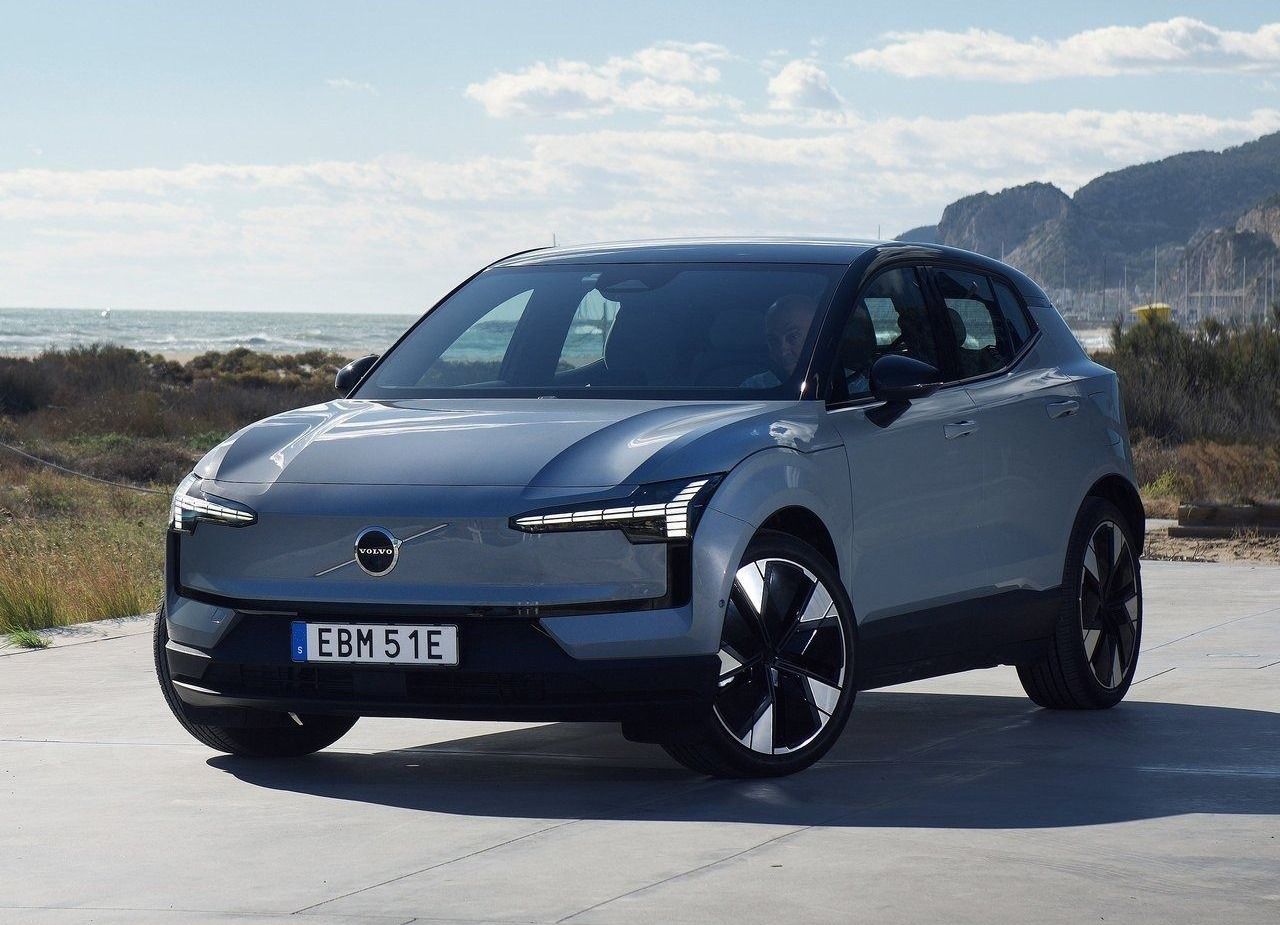
The EX30 is Volvo’s smallest and most affordable EV, yet it packs serious tech and performance. Built on Geely’s SEA platform, it offers Single Motor RWD or Twin Motor AWD setups, with up to 422 hp and 0–60 mph in 3.4 seconds.
Despite its compact footprint, it delivers premium features like a minimalist cabin, Google-based infotainment, and advanced driver assistance. Its aerodynamic silhouette, lightweight build, and one-pedal driving mode contribute to energy savings in urban settings.
Regenerative braking is non-adjustable but effective, and the 153 kW DC fast charging enables 10–80% top-ups in ~26 minutes. The EX30’s smart thermal management and battery buffers help maintain range across varied climates.However, its efficiency dips at highway speeds, and larger wheels can reduce range. Still, for city dwellers and first-time EV buyers, the EX30 offers a stylish, sustainable entry into luxury electric mobility.
12. Genesis Electrified GV70 (2025) – Luxury Electric Compact SUV
- EPA Ratings: Range: ~235–298 miles depending on wheel size, climate, and driving style; Battery: 77.4 kWh usable; Dual Motor AWD standard
Real-World Mileage
- Car and Driver’s testing showed ~240 miles in mixed driving, while Edmunds recorded ~235 miles in highway conditions.
- Electrifying.com noted that in mild weather and city driving, the GV70 could exceed 300 miles, but range dropped to ~200 miles in colder climates or at sustained highway speeds.
- InsideEVs estimates real-world range between 220–275 miles depending on terrain, temperature, and use of Boost Mode.
Why It’s Surprisingly Refined
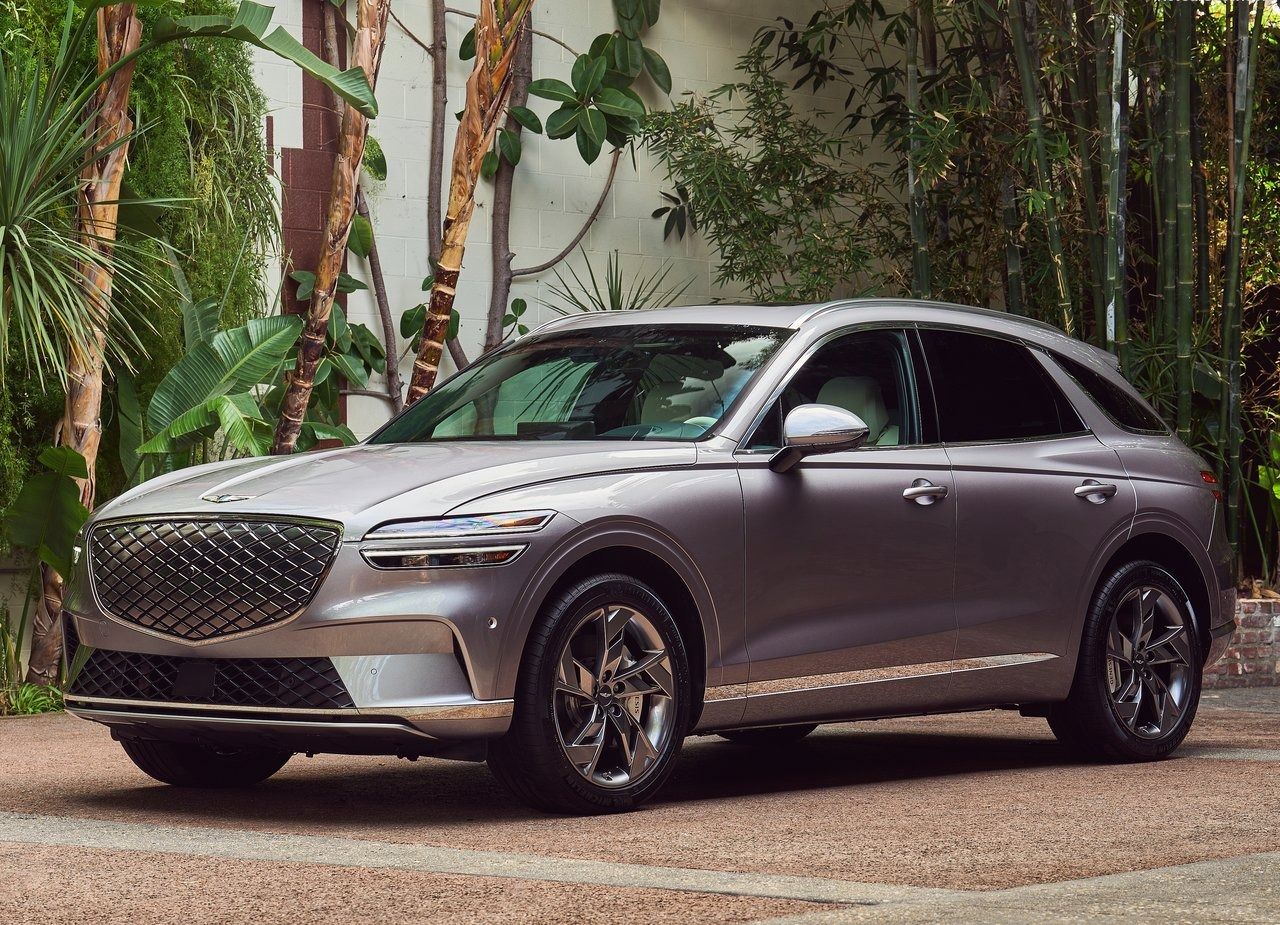
The Electrified GV70 blends Korean luxury with cutting-edge EV tech. Built on a modified ICE platform, it uses an 800V architecture for ultra-fast charging—10–80% in ~18 minutes at up to 240 kW. Its dual motors deliver 429 hp (483 hp with Boost), achieving 0–60 mph in 4.2 seconds.
Inside, it’s all premium: quilted leather, ambient lighting, and a 14.5" infotainment screen with EV-specific displays. The cabin is whisper-quiet thanks to active noise cancellation and laminated glass. Smart regenerative braking adapts to traffic flow, and V2L capability lets you power devices off-grid.
While not the most efficient EV in its class, the GV70 excels in comfort, tech, and charging speed. Larger wheels and aggressive driving can reduce range, but for those seeking a luxurious, fast-charging SUV with everyday usability, the GV70 hits a sweet spot between performance and practicality.
13. Mercedes-Benz EQS (2025) – Flagship Luxury EV Sedan
- EPA Ratings: Efficiency: ~150–160 Wh/km (~100–107 MPGe equivalent); Battery Options: 96 kWh (EQS 350), 118 kWh (EQS 450+/580); EPA Range: ~305–390 miles depending on trim and wheels
Real-World Mileage
- Edmunds testing showed the EQS 450+ reaching ~400 miles in optimal conditions, while Car and Driver recorded ~352 miles with larger wheels and mixed driving.
- Autocar’s review noted that cruising range now consistently exceeds 300 miles, though aggressive driving or cold weather can reduce it to ~280 miles.
- InsideEVs estimates real-world range between 310–370 miles depending on terrain, climate, and driving style.
Why It’s Quietly Brilliant

The EQS is Mercedes’ electric answer to the S-Class—sleek, silent, and tech-laden. Its ultra-low drag coefficient (0.20 Cd) and intelligent energy management help it sip electrons efficiently. The 2025 update adds a new grille design and expanded battery options, with the larger 118 kWh pack enabling longer range and improved performance.
Inside, it’s a digital sanctuary: the optional Hyperscreen spans 56 inches across the dash, blending infotainment, navigation, and passenger controls. Active noise cancellation, air suspension, and rear-wheel steering make for a serene, agile ride.
Charging is decent—up to 200 kW DC, with 10–80% in ~31 minutes. While its 400V architecture trails rivals like Lucid and Tesla in charging speed, the EQS excels in refinement, comfort, and long-haul capability. For those seeking a futuristic yet familiar luxury experience, the EQS remains a benchmark in electric elegance.
14. Mercedes-Benz EQE SUV (2023–2025) – Luxury Electric Midsize SUV
- EPA Ratings: Efficiency: Cd 0.25 drag coefficient for superb real-world range; Battery: 96 kWh usable; EPA Range: ~253–279 miles depending on trim and wheels
Real-World Mileage
- EV Database testing shows the EQE 350+ achieving ~265 miles in mixed driving, with up to 335 miles in mild city conditions and ~220 miles on cold highways.
- Autocar reports that the EQE SUV consistently delivers over 250 miles in varied conditions, though larger wheels and colder climates can reduce range to ~210 miles.
- Edmunds estimates real-world range between 240–275 miles depending on driving style, terrain, and use of climate controls.
Why It’s Aerodynamically Smart
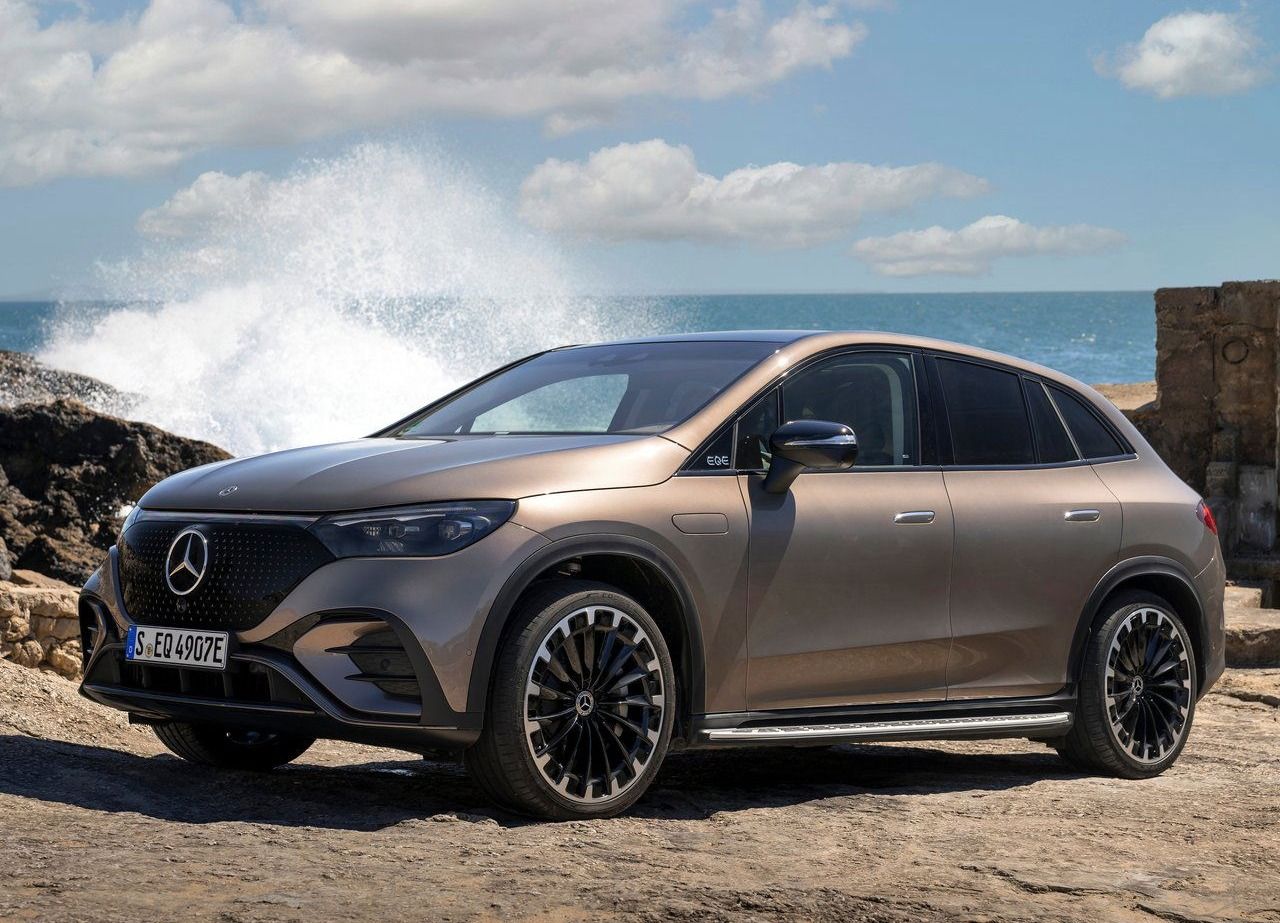
The EQE SUV is Mercedes’ answer to the BMW iX and Audi Q8 e-tron—sleek, spacious, and tech-forward. Its Cd 0.25 drag coefficient is exceptional for an SUV, helping it glide through air with minimal resistance.
Built on the EVA2 platform, it offers dual-motor AWD, up to 402 hp, and 0–60 mph in 5.6 seconds. Inside, it’s a digital haven: optional Hyperscreen, ambient lighting, and air suspension deliver a serene ride. Rear-wheel steering enhances agility, while adaptive damping smooths out rough roads.
Charging is swift—up to 173 kW DC, with 10–80% in ~30 minutes. Though not the longest-range EV in its class, the EQE SUV excels in refinement, tech, and aerodynamic efficiency. For buyers seeking a luxurious electric crossover with real-world usability and futuristic flair, it’s a compelling choice.
15. Lexus LS 500h (2025) – Flagship Luxury Hybrid Sedan
- EPA Ratings: Efficiency: ~29 mpg combined (est.); Powertrain: 3.5L V6 + dual electric motors; AWD standard; Fuel Tank: 22.2 gallons; Estimated Range: ~640 miles highway, ~488 miles city
Real-World Mileage
- Edmunds reports a combined EPA rating of 25 mpg, though real-world driving often yields closer to 27–29 mpg depending on terrain and climate controls.
- Cars.com notes highway mileage can exceed 30 mpg in mild conditions, while city driving typically returns ~22–25 mpg.
- SatJapan highlights the LS 500h’s regenerative braking and EV mode at low speeds, which help boost efficiency in urban settings.
Why It’s Quietly Efficient
The LS 500h blends traditional luxury with hybrid sophistication. Its multi-stage hybrid system delivers 354 hp and 0–60 mph in ~5.2 seconds, offering smooth acceleration without sacrificing fuel economy. Unlike plug-in hybrids, it doesn’t require external charging—making it ideal for long-distance travel with minimal fuss.
Inside, it’s a sanctuary of craftsmanship: ambient lighting, real wood trim, massaging seats, and a 24-inch head-up display elevate the experience. The ride is whisper-quiet thanks to laminated glass and active noise cancellation, while air suspension and AWD ensure comfort across varied road conditions.
Though it lacks full EV capability, the LS 500h excels in delivering a serene, fuel-efficient drive with all the hallmarks of flagship luxury. For buyers seeking eco-conscious elegance without range anxiety, it’s a compelling alternative to fully electric sedans.
Finalized List of 15 Luxury Cars With Impressive Fuel Economy
Lexus UX 300h (2025) Hybrid~43 mpg
- Lexus RX 350h (2025) Hybrid~36 mpg
- Lexus ES 300h (2025) Hybrid~44 mpg
- Lincoln Aviator Grand Touring (2023) PHEV~56 MPGe
- Volvo XC90 Recharge (2025) PHEV~58 MPGe
- Jaguar I-PACE (2020) EV~76 MPGe
- BMW i8 (2020) PHEV~69 MPGe
- Audi A8 TFSI ePHEV~54 MPGe
- Porsche Panamera E-HybridPHEV~51 MPGe
- BMW 330e (2025) PHEV~28–36 mpg
- Volvo EX30 (2025) EV~100 MPGe
- Genesis Electrified GV70 (2025) EV~235–298 mi
- Mercedes-Benz EQS (2025) EV~100–107 MPGe
- Mercedes-Benz EQE SUV (2023-2025) EV Highly Efficient
- Lexus LS 500h (2025) Hybrid~29 mpg
